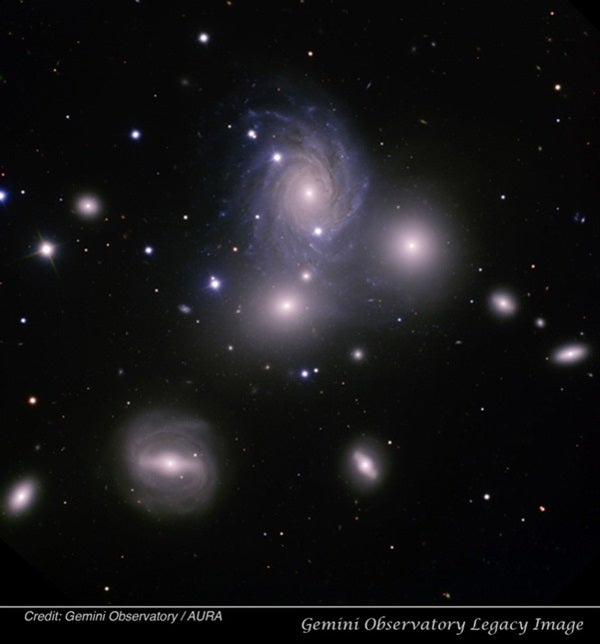Everything around us is spinning: particles, planets, stars, galaxies. Why not the universe?
Maple Ridge, British Columbia
Spin is ubiquitous in the cosmos. Planets rotate, as do stars and galaxies. This comes about simply from conservation of angular momentum. When two ice skaters approach each other and link arms, they will start rotating — clockwise if they link right arms and counterclockwise if they link left arms. If two stars approach each other, gravity along with other effects might cause their mutual capture. The associated matter may form planets and other objects that share the original angular momentum and are all likely to rotate or spin with an axis along its original direction. This is a random process, so we would not expect the universe as a whole to have a net angular momentum, unless it had one originally.
Astrophysicists believe the universe started some 13.8 billion years ago in a “Big Bang” that rapidly expanded into the universe we see today. We are confined within that universe, and we can never see what, if anything, is outside it. Still, we can imagine seeing our universe from the outside.
It is possible to visualize our universe spinning in this larger space. Protons were born spinning, as were electrons, neutrinos, etc. Why not universes? If the universe was born with an initial spin, as it expanded from the Big Bang, turbulence would cause the initial angular momentum to dissipate among smaller and smaller objects. In other words, we would not expect the universe as a whole to be rotating now. Instead, the smaller objects like galaxies would “remember” the primordial angular momentum and show a preference for rotating about the original spin axis.
This would show up in the orientation of spiral galaxies as we see them. In fact, there is significant evidence that spiral galaxies do exhibit a preferred spin direction about an axis close to the north pole of our Milky Way. About 10 percent more spiral galaxies are left-handed spirals, spinning in the same direction as our own.
University of Michigan, Ann Arbor
[Editor’s note: This article was updated March 13, 2023.]










